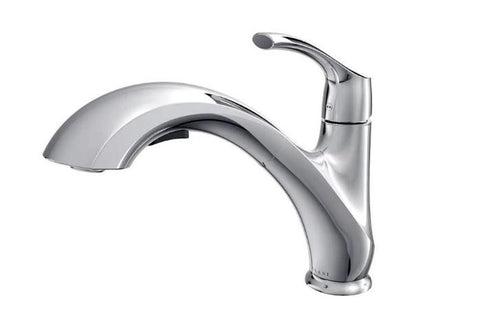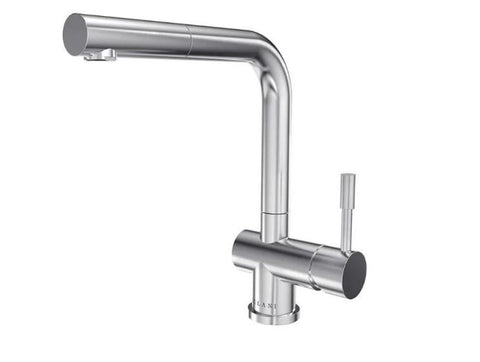A pull-out kitchen faucet brings style and functionality in a durable and easy-to-use product. Its architectural details require minimal headroom and create a more modernistic design while enabling smooth operations.
However, like any other kitchen taps, pull-out faucets can lose their pristine condition over time. Some parts may need replacement, and others may need minor fixes or repairs.
You are watching: Troubleshooting Pull-out Kitchen Faucets
If you have this faucet type and are worried about or currently facing some annoying tap problems, this article suits you well. We gathered some of its hitches along with their handy solutions.
First, What Is a Pull-out Faucet?
Pull-out faucets look like the regular kitchen sink faucets but with a few distinguishing features, including a spray head that pulls away directly from its body, hence the name. They also come with secondary spray functions that help users control the water flow.

Maldives – Low Profile Pull-Out Kitchen Faucet
What Is the Difference Between a Pull-Down & a Pull-Out Faucet?
The terms pull-down and pull-out kitchen faucets are often used interchangeably. While both share some similarities, such as retractable spout, extension options, and a spray system, there are a few differences.
Here are some key differences between these two kitchen faucets:
- Spout length. Pull-out faucets generally have a shorter spout than their pull-down
- Spray hose. Oftentimes, a pull-out faucet will have a more usable spray hose to be able to use outside of the typical sink area. Since this faucet typically has a shorter faucet spout, the spray hose could reach further. If you are watering plants or filling a pot with water on the counter, a pull-out tap could be a convenient option.
- Sink compatibility.Pull-out models are ideal for kitchens with limited space around or above the sink, while pull-down faucets are suitable for deep kitchen sinks or large pots.
How to Troubleshoot Pull-Out Kitchen Faucet Issues
1. Hose Isn’t Retracting
Frequent retraction can cause a defective hose. A faucet’s hose may stop retracting properly due to repetitive use.

Solutions:
- When the hose of your pull-out kitchen fails to retract, look underneath the sink and check if the hose and weight movement are clear. If the movement is being impeded, move the impediment to create a clear path.
- Did you know that hoses have a weight attached to them? This weight triggers retraction. Check if the weight has slipped or fallen off. If it did, adjust the weight using a screwdriver. You could also add weight to the faucet’s hose if you want a stronger retraction.
2. Low Water Pressure
Issues of low water pressure are common in all faucet models. If water is barely coming out of your faucet, the most common cause is a clog or pinched water lines.
Solutions:
- There could be a build-up of mineral deposits in the aerator or cartridge. Remove the aerator and clean it with a toothbrush. For stubborn build-ups, you can try placing the aerator in boiling, hot vinegar for half an hour.
- If the water pressure is still low after cleaning the aerator, remove the cartridge and run the water without it. If there’s good water pressure without the cartridge, replace the cartridge.
- Inspect the hot and cold-water supply lines to ensure that they are in good working order. Ensure that the lines are not pinched or crimped.
Parting Thoughts
While practicing caution and routine care can keep faucet problems at bay, they can still occur. To protect yourself from the stress of fixing such issues or buying replacement parts, purchase a faucet with a comprehensive warranty.
At Lulani, all our products are backed by our Consumer Lifetime Limited Warranty / Commercial five (5) year warranty from the original date of purchase.
The Lulani Faucet Warranty covers the replacement of all defective parts and finish. Learn more about this lifetime limited warranty here.
Source: https://gardencourte.com
Categories: Kitchens
